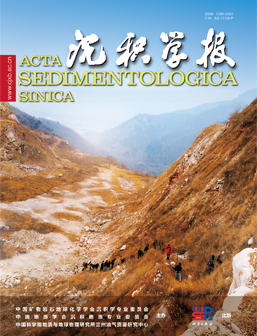Material Characteristics and Provenance Research of Fine-grained Sedimentary Rocks
doi: 10.14027/j.issn.1000-0550.2024.135
- Received Date: 2024-08-19
- Available Online: 2025-03-04
-
Key words:
- Keywords: Fine-grained sedimentary rocks /
- Provenance /
- Material characteristics /
- Mechanism of origin
Abstract: Abstract:[Significance] The study of the provenance of fine-grained sedimentary rocks is a crucial first step in the "source-to-sink" system theory of fine-grained sedimentary rocks. It is of great importance for restoring the ancient environment, understanding the formation mechanism of fine-grained sedimentary rocks, and predicting the distribution of unconventional oil and gas resources. Fine-grained sedimentary rocks are characterized by small particle size, complex composition, and difficulty in observation and research, with different material components corresponding to a variety of sources and origins. A review of the existing research results at home and abroad shows that there is currently a lack of systematic organization and summary of research outcomes regarding the provenance and origins of fine-grained sedimentary materials.[Progress] This paper synthesizes current research findings and categorizes the sources of fine-grained sedimentary rocks into three major types: terrigenous, endogenic, and volcanic-hydrothermal. It provides an in-depth summary and conclusion on the common sources and origins of fine-grained sediments, pointing out: (1) Clay minerals are of terrigenous origin, authigenic transformation from other minerals, transformation between clay minerals, hydrolysis of submarine volcanic materials, and biogenic mediation by extracellular polymeric substances; (2) Quartz mainly originates from the weathering of terrigenous materials, intra-basin biological activity, devitrification of volcanic ash materials, and authigenic formation; (3) Feldspar originates from the weathering of terrigenous detritus, input from volcanic-hydrothermal activity, and recent studies have also indicated that feldspar can be formed through microbial chemical processes; (4) Carbonate minerals are primarily endogenic, formed through chemical, bio-chemical, biological, and transport-deposition processes within the basin, and the input of terrigenous and volcanic-hydrothermal materials not only directly provides carbonate minerals for fine-grained sedimentary rocks but also promotes the formation of carbonate minerals within the basin; (5) Pyrite is mainly formed by the two ore-forming elements, iron and sulfur, through dissimilatory iron reduction and iron shuttling mechanisms, microbial reduction, and thermogenic reduction of sulfate within the basin; (6) Organic matter can be divided into terrigenous vitrinite, inertinite, and some liptinite, as well as endogenic liptinite, zooclastic organic debris, and secondary organic matter. Future research on the provenance and origins of fine-grained sedimentary rocks will develop in a multidisciplinary and high-precision direction, and there is still an urgent need for a systematic approach suitable for the study of the provenance of fine-grained sedimentary rocks.[Conclusion] This paper aims to clarify the provenance and origins of fine-grained sedimentary rocks, enhance the understanding of the sources and formation mechanisms of fine-grained sediments, and thus promote the development of fine-grained sedimentology theory. It provides a solid theoretical foundation and scientific basis for identifying the distribution characteristics of fine-grained sedimentary strata and predicting the distribution of unconventional oil and gas resources.
| Citation: | Material Characteristics and Provenance Research of Fine-grained Sedimentary Rocks[J]. Acta Sedimentologica Sinica. doi: 10.14027/j.issn.1000-0550.2024.135 |






 DownLoad:
DownLoad: